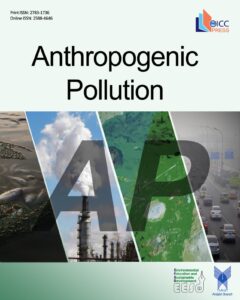Investigation Benzene emission from Gas Stations in Tehran’s 22 Districts and its Modeling in Regions with the Highest Emission Levels
Authors
- Maryam Chehrehei * 1
-
Seyed Alireza Mirzahosseini
 2
2
-
Nabiollah Mansouri
 3
3
- Mohammad Hassan Behzadi 4
- Youssef Rashidi 5
Abstract
Volatile organic compounds including benzene that are produced in industrial activities, especially those emitted from gas stations, can have undesirable effects on the environment and human health. TANKS 4.09 d software was used to calculate benzene emissions from gasoline storage tanks in gas stations throughout the 22 Districts in Tehran. Benzene emissions 1.5 m above the ground was modeled for a 12-month statistical period (2018) using AERMOD. Based on the results of emissions, the maps of benzene dispersion and comparison with the number of loading, storage capacity and numbers of storage tanks and active nozzles, In this study, it was identified that benzene emissions have increased due to lack of proportionality between gasoline storage capacity and demand for it and the concentration of gas stations at specific sites without observance of the suitable distance between them. The highest concentration of benzene emissions was recorded in Districts 4,2,15 and 1 (0.143, 0.128, 0.121, 0.118 gr/s respectively) and the lowest in Districts 17 and 14 (0.008, 0.03 gr/s respectively).In heavy traffic Districts, the number of loading and hence benzene emissions have increased due to the high demand for gasoline, the disproportionality between storage capacity and consumer demand for gasoline, and the small number of gas stations. In light traffic Districts, benzene emissions have increased because of the low demand for gasoline, the lack of proportionality between storage capacity and demand for gasoline, and the large number of gas stations that leads to gasoline storage in excess of the demand for it.



